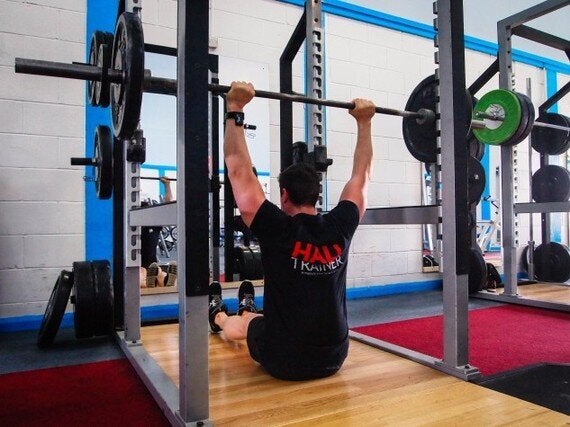The key to any successful fitness programme is variety. While all of the 'standard' exercises and lifts, such as the bench press and squat, are key, there are many more little-known exercises that could also help you achieve your goals.
To help with your workout inspiration, here are five upper body exercises you probably didn't know existed, but should definitely include in your next workout!

1. Standing Cable Pallof Press
Origin: This exercise was introduced in 2006, and named after the Boston-based physical therapist, John Pallof.
Targets: It works the core's 'true' fuction - stability over movement. It resists the trunk going into side flexion (bending to the side) and extension (bending backwards), working the core and abs hard! It also helps to bring the hips into a strong posterior pelvic tilt position (hips tucked underneath) along with keeping your abs braced.
Who can do it? It's an exercise that can be both regressed and progressed for any level of ability. Standing (feet neutral) is probably the most basic version of this exercise. Once you've mastered this you can then play around with feet position (split stance) and then move into a kneeling position.
2. Z Press
Origin: This movement is named after strongman Zydrunas Savickas.
Targets: Core, shoulders - requires hip mobility, trunk strength, hamstring flexibility and lumber strength, as well as thoracic spine mobility.
Who can do it? This is a much harder exercise than your standard overhead press, and if you expect to lift an equal amount of weight as you would during your overhead press then you will be disappointed! It is best attempted by those familiar with weightlifting. Make sure you keep your heels and the back of the knees in contact with the floor and then perform the movement like a standard overhead press.
If you struggle to keep the legs straight and the lower back stiff, then try widening your foot position slightly, which will make room for your hips, or place a small step under your bum to reduce the degree of hip flexion. This exercise requires a huge amount of trunk stability and hip mobility, and if you find you're lifting less than half the weight for your standing overhead press then you need to work on your truck stability and hip mobility before tackling it.
3. Kneeling Zottman Curl
Origin: Named after the 19th Century strongman, George Zottman.
Targets: all of the muscles that flex your elbow joint. The concentric portion (as you curl the dumbbells up) primarily targets the biceps, with them being in a mechanically strong position when your palms are facing upwards. At the top of the exercise, rotate the wrists, switching to a pronated grip (palms down). As we lower the weight, we readily engage the brachioradialis (a muscle which runs from the forearm to the upper arm) and brachialis (the muscle located beneath the biceps), effectively combining two exercises in one.
Who can do it? Anyone. Those new to weightlifting should just start with a smaller weight! We find the Zottman curl has a strong carry over for chin up or pull up strength especially in females, due to the biomechanics of the lift.
Typically you'll see people performing this in a standing position. Personally, I prefer a kneeling position as eliminates the ability to cheat or force the weight up by swinging from the back or using the legs. When in a kneeling position I find it places more emphasis on the core and glutes by holding a posterior pelvic tilt position.
4. California Press
Origin: Believed to have been named by members of Gold's Gym in California back in the '70s.
Targets: It's a hybrid exercise that's a cross between the close-grip bench press and lying triceps extension. It's a popular assistance exercise among the powerlifting community, particularly by lifters who need to increase the size of their triceps and strength to bring up their bench press weight.
A good starting weight for this exercise would be a halfway weight between what you would lift when you close-grip bench press and what you would use when performing lying triceps extensions. If you find yourself going too heavy too soon, you'll more than likely compromise technique and it'll revert back to being a close-grip bench press.
Who can do it? This is best practiced by somebody familiar with weightlifting, who has experience in both the close-drip bench press and lying triceps extension.
5. Pendlay Row
Origin: Named after former Junior World Champion in Powerlifting and Collegiate National Champion in Olympic Weightlifting, Glenn Pendlay.
Targets: Maximal back strength and explosiveness - great for improving deadlifts!
Who can do it? This exercise should only be attemped by those with a strong core and lower back. Starting and stopping each rep from the floor minimises the time the weight is suspended, allowing for a split second recovery and easing the burden on the lower back. This allows for a greater amount of weight to be lifted compared to the bent over row. However, due to the body's position and pull from the ground, the body is having to resist the bar's downward force meaning you'll need a strong core and low back if you want to be pulling sufficient weight. It should be performed with lower reps (4-8) and an explosive manner.
Hopefully this post has given you a few ideas on how you can spice up your next programme. Watch this space for five lower body exercises you should be using too!